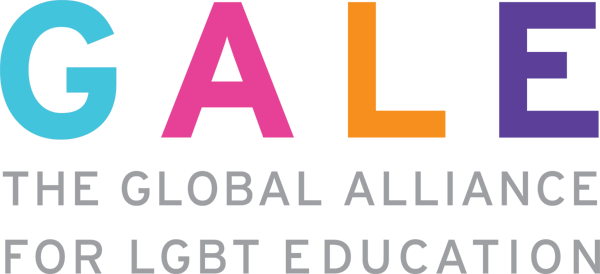My-ID project publishes guides for schools on how to cooperate with parents on sexual and gender diversity

4 December 2023 - The European My-ID partnership closed its two-year project with the publication of three products on how schools can cooperate with parents on the topic of sexual and gender diversity. The three products are a School Guide on how to communicate with parents, a template for a Brochure for Parents to inform school parents about the LGBTIQ+ policy of the school and a short general Parent’s Leaflet for all parents for the national levels of project partners.
Leaflet for parents
The leaflet for parents starts with a short explanation of what sexual and gender diversity is (intersex variations, transgender issues and sexual orientations) and why this is sometimes a challenge for parents when they have heteronormative expectations. The brochure then proposes that there are three main ways parents deal with this initial surprise or shock: support (supporters), processing their ambiguous feelings (processors) and deciding how to deal with their initial impulse of rejection (disapprovers). The brochure describes what parents may feel and think, and suggests some ways forward - without going into detail or into specific suggestions or guidelines.
Brochure for school parents
The brochure for school parents is a template that needs to be edited by each school to fit its own mission and strategy. It should also be edited for the tone which works best for approaching their specific audience of parents. This brochure starts with the same basic information given in the leaflet for parents in general. It makes clear to parents that the school has decided to be welcoming to all students, and that this includes LGBTI students. Then it has a chapter which outlines the school policy on sexual and gender diversity. The offered policy suggestions link to the GALE model guidelines, but of course need to be adapted to what each school decided to choose and implement. The third and last chapter of the guide goes into how the school involves parents. It discusses the way school policy is developed, the formal decision procedure, proactive involvement of parents and finally, how will be dealt with potential complaints.
Guide for schools on how to cooperate with parents
The development of the School Guide for schools encountered some differences of opinion within the partnership. The author of the first version of the guide focused on ‘proving’ that sexual and gender diversity is natural and legitimate. GALE helped to correct some factual errors in this text. But GALE also noted that the lengthy ‘defensive’ text could raise eyebrows in progressive countries. It might also create adverse effects in more conservative countries, where adversaries of sexual and gender diversity could counter the ‘arguments’ for legitimacy with counter-arguments based on religion and tradition. The first draft also missed suggestions for schools or parents. The author expanded the guide with a range of concrete suggestions on how parents could support their child. But these still seemed to be targeting only a mix of cisgender heterosexual supportive and ambiguous parents. The given suggestions were not formulated in such a way that they would be acceptable for disapproving parents, nor would they be very relevant to LGBTIQ+ parents. After some discussion in the partnership, the developing partner of the guide did not accept these objections and decided that the School Guide was appropriate for both for the current Italian context and adaptable to other national contexts. The other partners complied with this and translated the guide. However, GALE did not feel that this version was usable in either the Dutch nor in the international context and ultimately, decided to develop its own Dutch and (for international use) English versions.
The GALE version of the School Guide starts with a short introduction about why a school needs school policy on sexual and gender diversity and explicit attention for how to communicate with parents. It stresses that when the school wants to deal with a range of parents with different opinions, they need to have a clear vision and a clear way of implementing their sexual and gender diversity policy in school. If they are not very clear and steadfast about this, there is a great risk they loose their ground in case of conflict. The next chapter is about different types of parents. The guide distinguishes supportive, processing and disapproving parents, but also LGBTIQ+ parents, parents of LGB+ children, parents of trans+ children and parents of children with an intersex variation. For each of these categories, the guide describes the specific challenges these parents face and how the school can relate to them. The last chapter goes into more concrete suggestions on how the school can inform, communicate and possibly cooperate with parents. Major choices of the school depend on their already existing connection with parents. Such a connection can be low/marginal, intermediate or high. In a school with a normally low connection with parents, it would raise alarm bells when the school informs the parents specifically and elaborately about sexual and gender diversity. This is a risk, especially when the school just starts to engage with these topics: parents may see it as something very special or controversial and it may invite criticism. The guide describes different types of connecting with parents in low, intermediate or high parent participation situations, and outlines how sexual and gender diversity can be integrated in each situation.
Parents are not one group
Throughout the guide and the other two products, GALE takes the view that parents of school students may be a reflection of society as a whole. A school should not consider them as one group which is either supportive, processing or disapproving. Representatives of any of these categories can approach the school and the school needs to deal with all of them in an optimal way. Critical questions of LGBTIQ + parents are just as legitimate as loud and insensitive complaints or protests of disapproving parents. The bottom line is that all parents will be concerned about their children and may experience the school’s involvement with sexual and gender diversity as not supportive enough for their children. The school needs to be sensitive and caring for all these parents, while at the same time being steadfast and clear about their welcoming and inclusive policy.
Sources: My-ID project page on GALE website
The GALE website contains the (English and Dutch) GALE-versions of the School Guide and the Model Brochure for School Parents. At the time of publication of this article, the earlier version of the School Guide that was not endorsed by GALE was not published yet on the partnership website https://myid-project.eu/resources/.
Source image: scene from the USA romcom “Love, Simon” (directed by Greg Berlanti), in which a teenager comes out to his parents
Dutch version of this article


